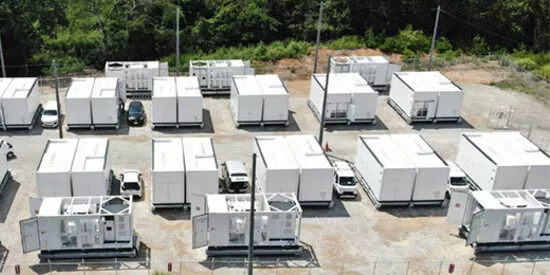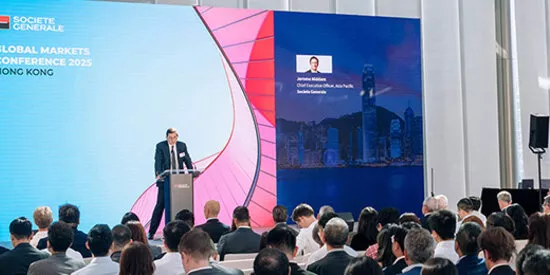
2024 Outlook: China's Economic gloom to lighten a little bit
By Wei Yao, Chief Economist and Head of Research for Asia Pacific at Societe Generale
Property market stabilization requires faster restructuring of developers' debts.
China's COVID reopening recovery this year has been disappointing. Although mobility and travel have normalized, Chinese people seem to be caught in a confidence crisis stemming from the sagging property market, scarring from the pandemic and lingering geopolitical tensions.
In reaction to the sluggish rebound, policymakers initially stepped in with incremental stimulus measures. This proved insufficient, so they introduced more meaningful measures over the autumn, most notably with the rare supplementary issuance of 1 trillion yuan ($140 billion) in sovereign debt in October to finance infrastructure spending.
Earlier this month, at the annual Central Economic Work Conference, policymakers pledged to be even more proactive in stabilizing the economy. With more policy support on the cards, what lies ahead for the Chinese economy in 2024?
By and large, the economic outlook will hinge on the property sector, where stabilization is still uncertain. Historical examples of severe property market busts show that they tend to last at least half a decade and can have a damaging impact on growth and price stability.
Housing sales and investment are set to end 2023 down by around 40% and 20%, respectively, from 2021 levels. The risk of things dropping much further is relatively low. Indeed, at an expected 1 billion sq. meters, this year's housing sales are on track to come in below our estimate of annual structural market demand of 1.2 billion sq. meters. There is scope for policy action to avoid an excessive adjustment.
Recent data make clear that measures introduced beginning in late August to support homebuying demand in top-tier cities have not been very effective in reviving property sales.
This is because buyers now have entrenched expectations that prices will decline further. That has led some Chinese to put homes purchased for investment up for sale, further adding to the supply overhang in the market.
To ease China's slowdown, more demand measures, such as interest rate cuts or further relaxation of purchase restrictions, may inevitably be required to stabilize price expectations and shore up confidence.
Another factor behind the weakness in property sales has been lingering concern over the ability of developers to complete projects already underway. This can be seen clearly in the divergence between sales of homes not yet fully built and those of existing homes. For the year through November, presales were down 12% from 2022 levels, while sales of existing homes rose 23%.
The lack of trust in private developers is turning into a vicious cycle in which weak presales further exacerbate property companies' cash flow problems. To stabilize the sector, the state will have to provide sufficient funding to developers to ensure project delivery and accelerate debt restructuring for distressed companies.
Policymakers now seem to be signaling they will step up funding support. There is talk that the government has assembled a list of private and state-owned developers designated for favorable treatment from lenders.
So far, though, investors remain skeptical, concerned that banks will continue to hold back on new lending to control credit risk. More explicit credit guarantees from the central bank and other parts of the state may be needed to push through funding for distressed developers.
However, even effective policy measures are likely to do no more than stabilize the market, given stagnating structural demand owing to China's aging population and the slowing pace of urbanization. This means activity is still likely to be down for 2024 as a whole, but the drop should be less than that of 2023.
Given the property market gloom, it is hard to have high hopes for a strong rebound in household consumption. Even though recent data show that the pace of savings accumulation by Chinese households has slowed, the ongoing correction in home prices will likely continue to weigh on consumers' willingness to spend.
On a more positive note, manufacturing investment should remain resilient, on the back of the government's continued push for higher-quality development, including an emphasis on decarbonization and achieving technological independence.
Exports, meanwhile, should see a mild recovery in 2024 after this year's sharp correction, thanks to the stabilization of Western goods demand and China's continued strength in green transition-related exports.
With the property sector dragging the economy down less, and a more supportive net trade picture, we expect gross domestic product growth next year of 4.5%, an acceleration from the average of around 4% seen this past two years.
Based on this month's Central Economic Work Conference, policymakers appear to be aiming at "around 5%" for next year's growth target. To achieve this, in our view, policy stimulus will need to be stepped up even more, likely requiring an increase in the government's broad fiscal deficit of at least 2 percentage points.
Presumably, this will involve the central government taking on more funding responsibility, given the weak fiscal capacity of many local governments, due in part to sluggish sales of land, normally a key revenue source.
We will get a clearer picture of the government's plans and targets at the next National People's Congress in March. However, the focus of fiscal policy will likely remain on investments. such as manufacturing upgrades and urban village redevelopment.
There still seems little willingness to provide direct consumption stimulus. However, we expect further progress in the restructuring of local government finances through debt swaps and loan extensions.
As for monetary policy, we expect to see more targeted lending, most likely involving use of the central bank's long-term Pledged Supplementary Lending facility to support urban village development, cuts to the reserve requirement ratio for banks and persistent downward pressure on their deposit and lending rates.
Further lowering of central bank policy rates will be needed, too, as real interest rates remain too high given weak price pressures.
Will 2024 mark the end of the beginning or the beginning of the end to China's malaise? The country still faces difficult challenges in resolving its property crisis and boosting private-sector confidence, but ample policy room remains and emerging green and technology industries continue to do well.
Still, only timely, effective policy measures will allow China to escape from the debt-deflation spiral trajectory that ensnared Japan three decades ago. If these materialize, that could presage the revival of China's asset markets. Confidence will be the key.
This article was originally published by the Nikkei Asia.


日本の長期脱炭素電源オークションで落札した蓄電池プロジェクトとして初のプロジェクトファイナンスを実現
ヘキサ・エネルギーサービスは、日本の長期脱炭素電源オークション制度のもとで開発を進める同社にとって日本初となる系統用蓄電事業において、業界における新たなテンプレートを築きました。ソシエテ・ジェネラルは、本系統用蓄電事業の資金調達において、主...

グローバルマーケットと日米金融政策の見通し
ソシエテ・ジェネラル証券株式会社 調査部長兼チーフエコノミストの劔崎仁とマルチアセットストラテジストの齋藤勉は先日、グローバルマーケットと日米の金融政策および金利の見通しについて見解を共有した。






